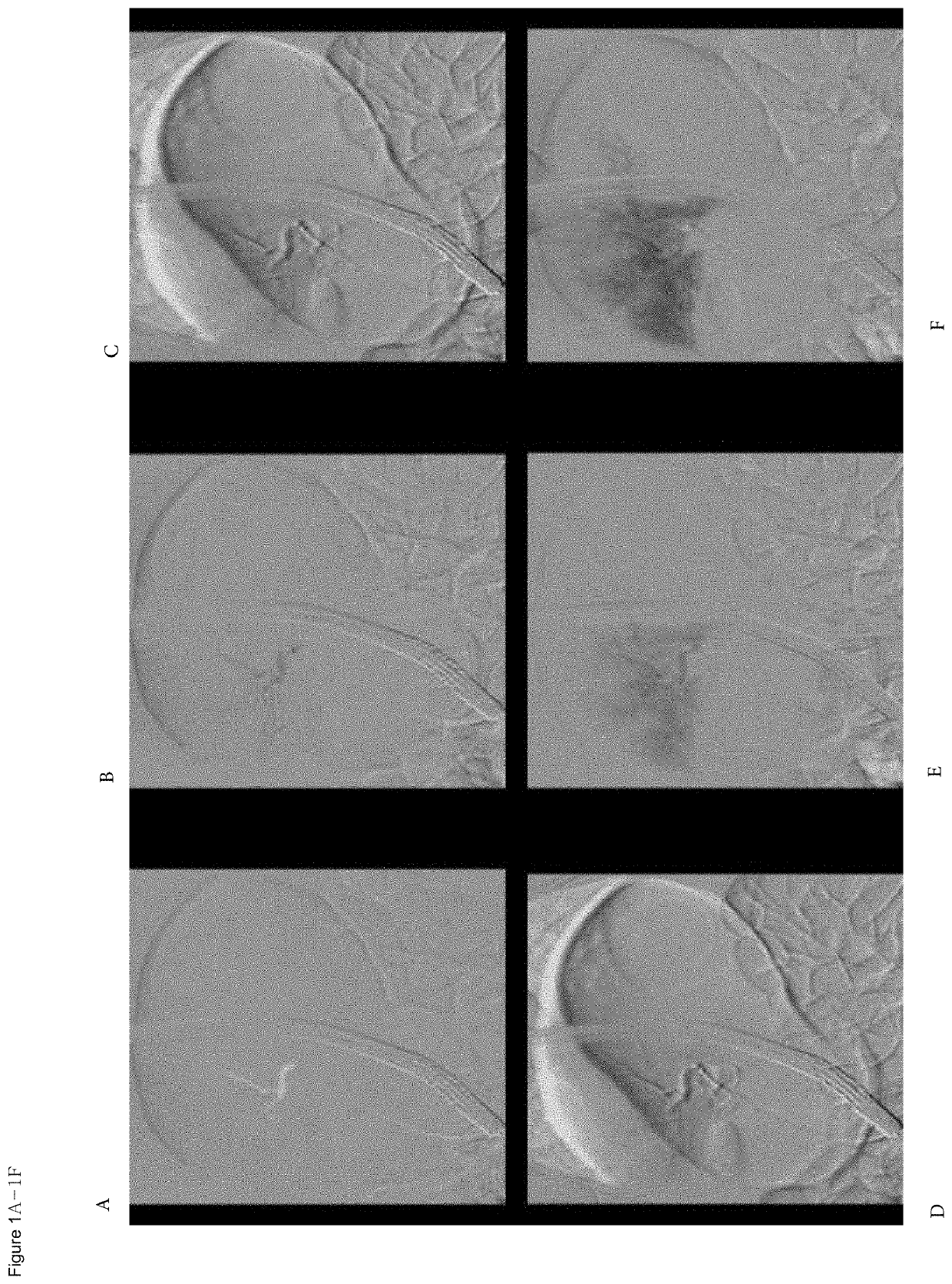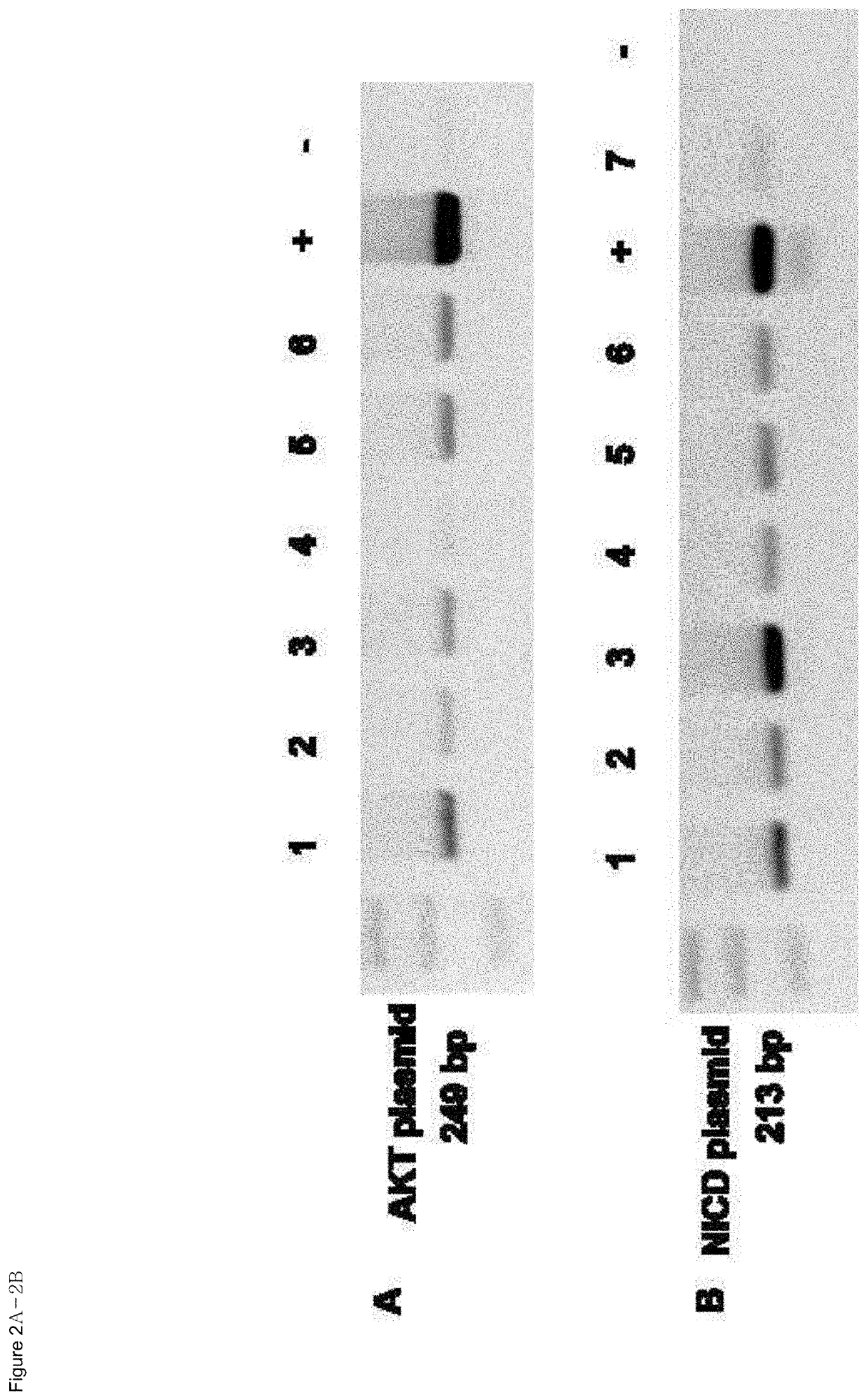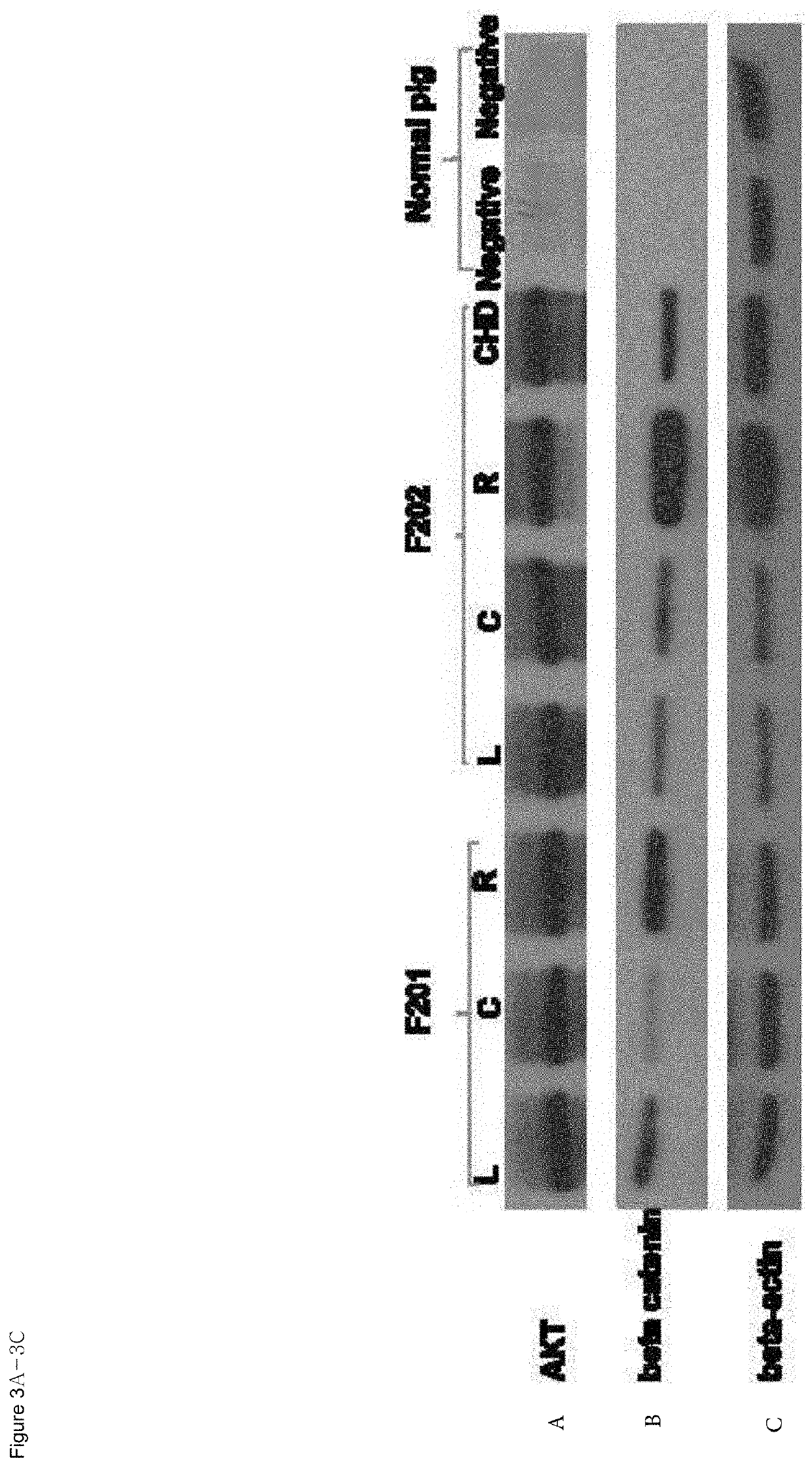Organ directed gene delivery
a gene delivery and organ technology, applied in the field of organ directed gene delivery, can solve the problems of not currently being treated, achieve the effect of facilitating the establishment and maintaining of an elevated pressure of the nucleic acid expression cassette, facilitating the creation or and facilitating the establishment and maintaining of a substantially closed spa
- Summary
- Abstract
- Description
- Claims
- Application Information
AI Technical Summary
Benefits of technology
Problems solved by technology
Method used
Image
Examples
example 1
[0170]Animal and Study Conditions.
[0171]A total of 15 Yorkshire pigs (Sus scrofa domestica) weighing 40-50 kg and aged four to six months at study initiation were obtained from a commercial, closed herd swine vendor (Archer Farms, Darlington, Md.). Environmental acclimation at 72° F.±2° F., 30-70% relative humidity, 14 hr:10 hr (light: dark cycle) and approximately 15 air changes / hour occurred for one week prior to study initiation. Swine were housed individually in 24 ft2 indoor runs and fed Teklad Mini-swine diet (No. 8753, Harlan Tekland, Madison, Wis.). Water was provided ad libitum prior to study initiation. All experimental animal procedures were approved by the Institutional Animal Care and Use Committee at the Johns Hopkins University and conducted in compliance with the Animal Welfare Act, applicable Animal Welfare Regulations, and the Guide for the Care and Use of Laboratory Animals at an AAALAC-accredited facility.31-33
[0172]Determination of Maximal Tolerable Injection P...
example 2
tor IX Gene Therapy
[0195]Endoscopic equipment currently used in human patients was employed. Using similar parameters to our previous study, ERCP-guided hydrodynamic injection was performed in four Yorkshire pigs (˜40 kg). After confirming catheter placement with contrast, a balloon was inflated in the common hepatic duct to seal the system. 30 mL of DNA solution (3-5.5 mg plasmid DNA in 0.9% NaCl) was injected over 15 seconds by power injector providing a significant increase in volume and pressure within the intrahepatic biliary system, which normally holds ˜5 mL of bile.
Results
[0196]The procedure was completed within 43±11 minutes across 4 pigs. During the hydrodynamic injection, no significant change in vital signs (blood pressure, heart rate, respiration rate, SpO2 and end-tidal CO2) was noted. All four pigs exhibited normal behavior post-procedure with no acute clinical signs or distress in the hours. Post-procedure bedside ultrasound showed no hematoma nor dilation of the com...
example 3
ucleic Acid Delivery
[0207]1. Case 1: Pig #503
(A) A first injection of 10 cc was injected probably in the cystic duct of the pig subject, the working channel of the balloon catheter was primed with 1.5 cc of contrast. A 10 cc plasmids was connected to the injection port of the cook fusion balloon catheter (8.5-15 mm, short wire so the guidewire port was nit used and the injection port was used) without inflating the balloon. 10 cc of plasmids was injected and it appeared the catheter was situated in the cystic duct as opposed to the right hepatic duct.
(B) The left hepatic duct was cannulated & the balloon was inflated to 12 mm and 10 cc of plasmids was injected into the left hepatic duct over 5 seconds,
(C) The middle hepatic duct was then cannulated and the balloon was inflated to 12 mm and 10 cc of plasmids was injected over 5 seconds.
[0208]On each occasion the balloon was kept inflated for 2 minutes.
[0209]In this pig the pancreatic duct could not be identified despite intensive int...
PUM
| Property | Measurement | Unit |
|---|---|---|
| volumes | aaaaa | aaaaa |
| diameters | aaaaa | aaaaa |
| diameters | aaaaa | aaaaa |
Abstract
Description
Claims
Application Information
 Login to View More
Login to View More - R&D
- Intellectual Property
- Life Sciences
- Materials
- Tech Scout
- Unparalleled Data Quality
- Higher Quality Content
- 60% Fewer Hallucinations
Browse by: Latest US Patents, China's latest patents, Technical Efficacy Thesaurus, Application Domain, Technology Topic, Popular Technical Reports.
© 2025 PatSnap. All rights reserved.Legal|Privacy policy|Modern Slavery Act Transparency Statement|Sitemap|About US| Contact US: help@patsnap.com



